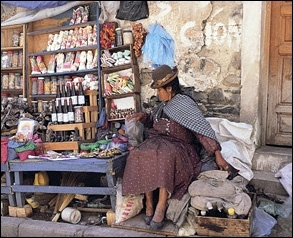"Okay, maybe later?"
This is probably the most common phrase we have heard while in Cusco. Let me explain. While you are on the Plaza de Armas many of the restaurants, shops and (oddly) massage parlors send people out to the plaza to try to bring people in. They are always very nice and almost always speak to you in Spanish. Until, that is, you politely decline. Then, they shift to English for the requisite, "okay, maybe later?" We aren't sure of the origins but
everyone says it. We guess that over the years as English speaking tourists have tried to politely decline they have themselves used this phrase and now the locals have adopted the phrase as their own.
Please don't misunderstand. We actually find this endearing and Cusco has been great. This is how local businesses drum up business in many places in South America and the folks in Cusco have been amongst the nicest and least pushy. There
are a lot of tourists here, but it doesn't feel obnoxious. After all, we're tourists too!



